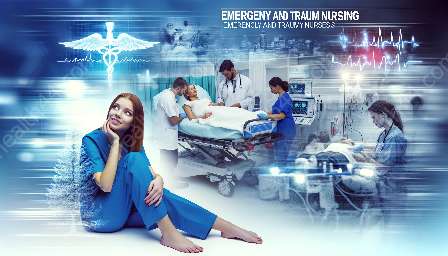Disasters can strike at any moment, from natural calamities such as earthquakes, hurricanes, and floods to human-made tragedies like mass shootings and industrial accidents. In the face of such events, emergency and trauma nurses play a critical role in providing immediate care, implementing disaster preparedness measures, and supporting community resilience. This comprehensive guide aims to equip nursing professionals with the essential knowledge and strategies for effective disaster preparedness and response.
Understanding Disaster Preparedness
Disaster preparedness is a proactive approach that involves planning, equipping, and training to mitigate the impact of potential disasters. In the context of emergency and trauma nursing, preparedness encompasses a range of specialized skills and competencies aimed at ensuring that healthcare professionals are ready to respond effectively in crisis situations.
Key Components of Disaster Preparedness for Nurses
To engage in effective disaster preparedness, nurses need to focus on key components:
- Training and Education: Emergency and trauma nursing professionals should undergo specialized training and education in disaster management, triage, and emergency care protocols. This ensures that they are equipped to handle the unique challenges presented by disaster scenarios.
- Communication and Coordination: Effective communication and coordination are crucial during disasters. Nurses must be adept at establishing clear communication channels and coordinating with other healthcare providers, emergency response teams, and community stakeholders to ensure a cohesive response.
- Resource Management: Managing scarce resources, such as medical supplies, personnel, and equipment, is a fundamental aspect of disaster preparedness. Nurses must be capable of making swift and informed decisions regarding the allocation of resources to maximize their impact.
The Role of Emergency and Trauma Nurses in Disaster Response
When disaster strikes, emergency and trauma nurses are at the forefront of the response effort. Their roles encompass:
- Triage and Initial Care: Nurses are responsible for quickly assessing and prioritizing the care of patients based on the severity of their injuries. This process, known as triage, is crucial in allocating resources to those in critical need.
- Stabilization and Treatment: Nurses provide essential medical care to stabilize patients and address immediate health concerns. This often involves managing trauma, administering emergency medications, and performing life-saving interventions.
- Emotional Support and Crisis Intervention: In addition to physical care, nurses play a vital role in providing emotional support and crisis intervention to patients, families, and communities affected by the disaster.
- Coordination and Collaboration: Nurses collaborate with various stakeholders, including physicians, first responders, and public health officials, to ensure a unified and effective response to the disaster.
Best Practices for Nurses in Disaster Situations
Adhering to best practices is crucial for nurses in disaster situations:
- Remain Calm and Focused: In the chaos of a disaster, it is essential for nurses to maintain composure and focus on delivering organized, efficient care.
- Stay Informed and Updated: Keeping abreast of the latest information and protocols is vital for nurses to adapt to rapidly evolving disaster scenarios.
- Advocate for Patient Needs: Nurses serve as advocates for their patients, ensuring that their unique needs and circumstances are addressed amidst the chaos of a disaster response.
- Self-Care and Resilience: Prioritizing self-care and building resilience is essential for nurses to sustain their ability to provide care during prolonged disaster situations.
Community Resilience and Recovery
Community resilience is the ability of a community to withstand and recover from adversity. Nurses play a crucial role in promoting community resilience by:
- Engaging in Community Education: Nurses can educate communities about disaster preparedness, response strategies, and available resources, empowering them to be more resilient in the face of disasters.
- Supporting Vulnerable Populations: Identifying and addressing the specific needs of vulnerable populations, such as the elderly, children, and individuals with disabilities, is essential for fostering community resilience.
- Collaborating with Community Organizations: Nurses can collaborate with community organizations and agencies to develop comprehensive disaster response plans and build community resilience through grassroots efforts.
Conclusion
Disaster preparedness and response are integral aspects of emergency and trauma nursing. By equipping nurses with the necessary skills, knowledge, and best practices, healthcare systems can ensure a robust and effective response to disasters, ultimately contributing to the resilience and recovery of communities. As frontline responders, emergency and trauma nurses play a pivotal role in safeguarding lives and promoting the well-being of individuals and communities amidst the most challenging of circumstances.
References:
- World Health Organization. (2018). Emergency and trauma care. Retrieved from http://www.who.int/emergencycare/en/
- American Association of Colleges of Nursing. (2020). Nursing and disaster preparedness. Retrieved from https://www.aacnnursing.org/News-Information/Fact-Sheets/Disaster-Preparedness


